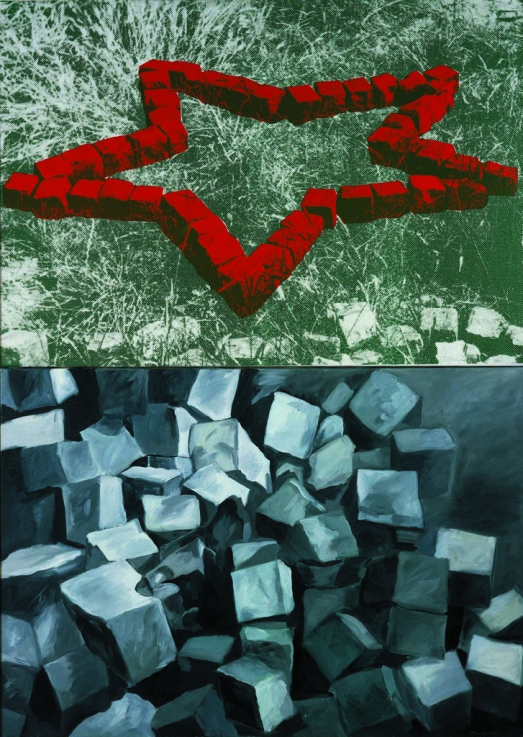At the beginning of the 1970s, Sándor Pinczehelyi turned his attention to the appropriation and decoding of the symbols of the labour movement, by way of creating conceptual art and graphic design. His set of iconography was later expanded to include specific Hungarian national symbols, such as the Hungarian tricolour (red, white, and green), and other characteristically Hungarian motifs (wheat, bread, goose, pig, paprika, etc.).
The five-pointed star and the hammer and sickle were in some Eastern European countries declared “totalitarian symbols” after the 1989 regime change, while they are still in use in other places, as state symbols or political party signs. It is an ongoing debate even today just what exactly these signs symbolize in their changing historical context, and what kind of personal sensibility may lead to them being judged offensive.
At the beginning of the 1970s Pinczehelyi took these symbols and returned them to everyday reality: he handled the sickle and hammer as utilitarian objects, used actual cobblestones to build a barricade and a five-pointed star, then used the photo documentation of these actions to display as exhibits, and in his graphic artwork. He investigated the ideology behind these symbols, how they had lost their substance, and contrasted or merged them with Western symbols (e.g. Coca-Cola). In the 1980s-90s, all of this reappeared in the form of painting and turned into (self-)irony; symbols familiar from earlier are used as self-quotations, and appear as visions of the past in the painting entitled “Farewell”. K.Sz.
